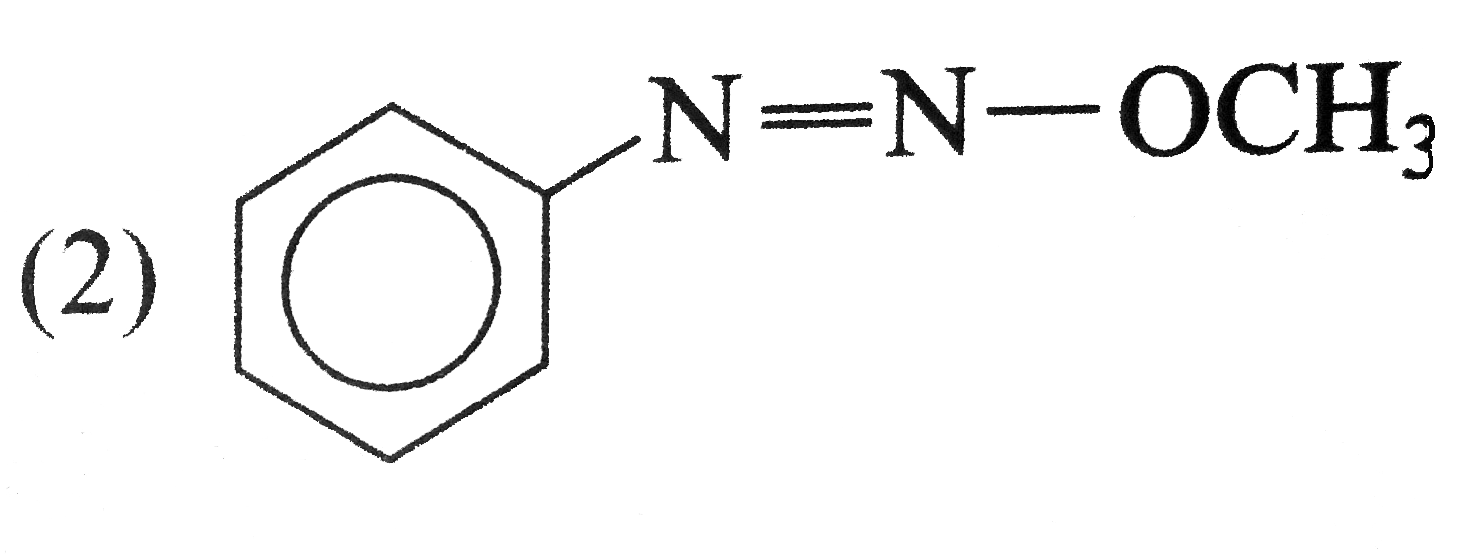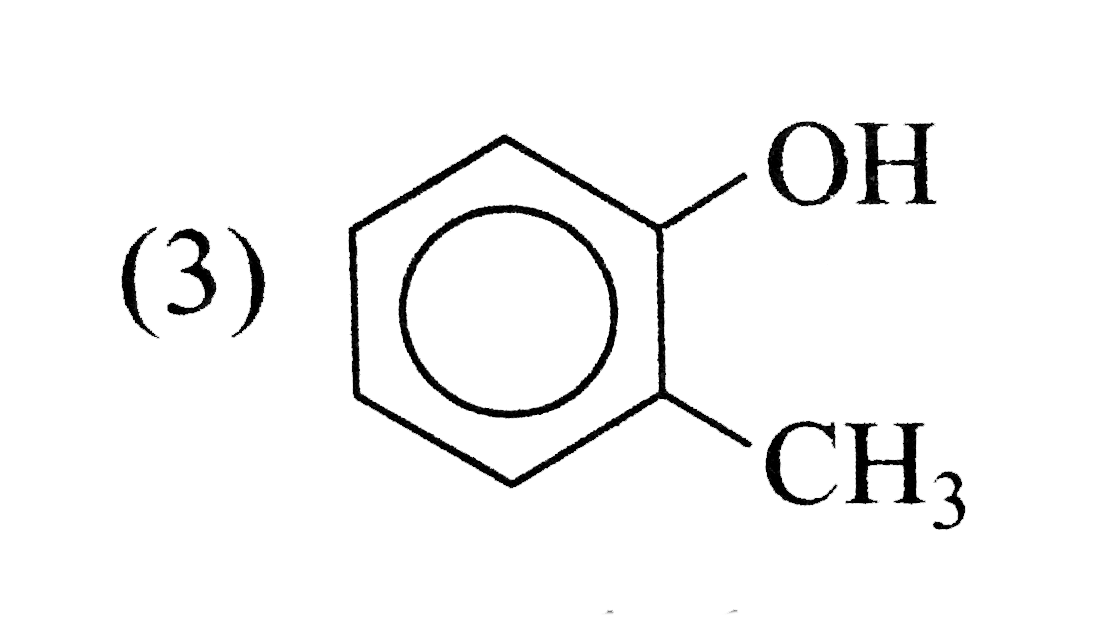Phenol, C6H5OH is allowed to react with diazomethane, CH2N2. The product formed is:
C6H5OCH3


C6H5CH2OH
The correct Answer is:A
To determine the product formed when phenol reacts with diazomethane, we can follow these steps:
1. Identify the Reactants:
- The reactants are phenol (C₆H₅OH) and diazomethane (CH₂N₂).
2. Understand the Mechanism:
- Diazomethane (CH₂N₂) has a reactive methylene group (CH₂) that can be involved in nucleophilic substitution reactions. The nitrogen atoms in diazomethane are part of a diazo group, which can leave as nitrogen gas (N₂).
3. Nucleophilic Attack:
- The oxygen atom in phenol has a lone pair of electrons and is negatively charged due to its electronegativity. This allows it to act as a nucleophile.
- The hydrogen atom of the hydroxyl group (–OH) in phenol is slightly positive due to the electronegativity of oxygen.
4. Formation of an Intermediate:
- The nucleophilic oxygen from phenol attacks the electrophilic carbon in the diazomethane (CH₂), resulting in the formation of a new bond.
- This leads to the formation of an intermediate where the hydrogen from the hydroxyl group is transferred to the nitrogen of diazomethane.
5. Elimination of Nitrogen Gas:
- The bond between the carbon and one of the nitrogen atoms in diazomethane breaks, leading to the release of nitrogen gas (N₂).
- The oxygen from phenol now forms a bond with the methyl group (CH₃) from diazomethane.
6. Final Product:
- The final product of this reaction is methyl phenyl ether, which is represented as C₆H₅OCH₃.
Conclusion:
The product formed when phenol reacts with diazomethane is methyl phenyl ether (C₆H₅OCH₃).
- The reactants are phenol (C₆H₅OH) and diazomethane (CH₂N₂).
- Diazomethane (CH₂N₂) has a reactive methylene group (CH₂) that can be involved in nucleophilic substitution reactions. The nitrogen atoms in diazomethane are part of a diazo group, which can leave as nitrogen gas (N₂).
- The oxygen atom in phenol has a lone pair of electrons and is negatively charged due to its electronegativity. This allows it to act as a nucleophile.
- The hydrogen atom of the hydroxyl group (–OH) in phenol is slightly positive due to the electronegativity of oxygen.
- The nucleophilic oxygen from phenol attacks the electrophilic carbon in the diazomethane (CH₂), resulting in the formation of a new bond.
- This leads to the formation of an intermediate where the hydrogen from the hydroxyl group is transferred to the nitrogen of diazomethane.
- The bond between the carbon and one of the nitrogen atoms in diazomethane breaks, leading to the release of nitrogen gas (N₂).
- The oxygen from phenol now forms a bond with the methyl group (CH₃) from diazomethane.
- The final product of this reaction is methyl phenyl ether, which is represented as C₆H₅OCH₃.
The product formed when phenol reacts with diazomethane is methyl phenyl ether (C₆H₅OCH₃).
Topper's Solved these Questions
- ALCOHOL, PHENOL AND ETHERSBOOK - R SHARMACHAPTER - ALCOHOL, PHENOL AND ETHERSEXERCISE - Follow -Up Test -14
9 Videos
- ALCOHOL, PHENOL AND ETHERSBOOK - R SHARMACHAPTER - ALCOHOL, PHENOL AND ETHERSEXERCISE - Quation Bank(Building the knowledge) Level I
7 Videos
- ALCOHOL, PHENOL AND ETHERSBOOK - R SHARMACHAPTER - ALCOHOL, PHENOL AND ETHERSEXERCISE - Follow -Up Test -12
14 Videos
- AMINESBOOK - R SHARMACHAPTER - AMINESEXERCISE - Archives
36 Videos
Similar Questions
Knowledge Check
C6H5CH2OH is
APhenolBAlcoholCCarbolic acidD(a) and (c)When ethene is allowed to react with diazomethane is presence of UV is light, the product formed is
ACyclopropaneBCyclobutaneCButaneDMethylcyclopropaneWhen ethyl iodide is allowed to reacts with sodium phenolate the product formed is
APhenetoleBPhenolateCEthylbenzeneDEthylphenol
When ethanal reacts with CH3MgBr and C2H5OH/dryHCl, the products formed are __________.
View SolutionA : When C2H5−O−CH3 is reacted with oen mole of Hl then C2H5OH&CH3l is formed .
R : It is SN1 reaction
View Solution1−Methylcyclohexene is allowed to react with B2H6. The product is then treated with H2O2 and NaOH. The reaction is -
_E01_007_Q01.png)
The product formed is
View SolutionEthyl acetate (CH3COOC2H5) is allowed to react with excess of CH3MgI in dry ether and subsequently heated with water. The final product formed is
View Solution
When D reacts with C2H5OH then product will be :
View Solution
